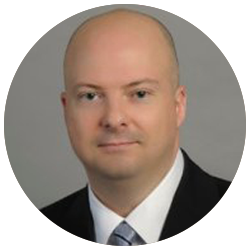Don’t reinvent the wheel – start with the frameworks these successful organizations have built off of!

Your approach to performance management is key to building high-performing teams. Organizations want to maximize productivity so they can achieve their goals. But even though organizations have made changes to their performance processes, less than half of employees say their current performance management is a good use of time.

Employees say their organizations can do better. They long for easier, more motivating, more meaningful performance management processes.
There’s not one perfect approach for your workforce. Building your ideal program requires a little experimentation and constant evolution. But it doesn’t have to be complicated or confusing. Backed by more than 20 years of employee experience research, Quantum Workplace has designed four customizable performance pathways that you can adapt to your organization’s unique needs.
As you navigate the journey of shaping your performance management philosophy, learn from real organizations and read their performance management case studies about the challenges they faced and the solutions they implemented.
In this blog, we'll share how Fossil Group, Benesch, and Scooter’s Coffee transformed their approach and dive into their performance management case study to show you how you too can be successful
At a time when the retail industry was undergoing rapid change and increased competition, Fossil Group knew it needed to find more efficient and effective ways to keep its managers focused on performance management and results.
Fossil Group used a complex, 100% paper process for performance reviews and check-ins for more than 15,000 global employees. They wanted to move toward a digital performance management strategy, but knew they needed to simplify the process first.
Fossil Group set up four traditional components that were stretched across three strategic touch points throughout the year. These touch points were supplemented with ongoing performance conversations that could be initiated by any employee, at any time.
As Fossil Group evolved its company-wide performance approach, they were happy to see immediate progress.
92% of employees participated in goal-setting reviews, setting an average of six goals per employee.
However, when they dug into the data, they found that 35% of individual goals created were misaligned or did not have an impact on the organization and its strategic priorities. They knew they needed to get better at goal alignment if they wanted to meet important business objectives.
Explore the three ways Fossil Group simplified performance management.
Although the three formal performance touch points in place were working, Fossil Group knew teams needed to have goal conversations more frequently. They implemented informal “check-ins” that could be launched by any employee at any time.
To ensure adequate time was made for important performance conversations and other performance-related activities, Fossil Group implemented "Performance Days" — days strictly dedicated to employee performance. On these days, no task-related meetings are scheduled, and all work is set aside for the day. Conversations between managers, employees, and teams are all centered on performance.
Fossil Group recognized that simply having more performance conversations wasn’t enough — the conversations needed to include healthy dialogue, debate, and collaboration from managers and employees. They created 1-on-1 templates to help guide managers and employees through an effective and productive goal conversation.
Check-in templates could be customized to the needs and work of individual teams and team members. The templates helped ensure conversations were focused on creating clear, aligned, and motivating goals.
Fossil Group wanted to bring performance conversations full circle by recognizing employee performance daily. They created recognition toolkits for managers including fun notecards, gift cards, and employee recognition tips. They also launched an online, peer-to-peer recognition program that generated an average of 140 recognition stories each week.
By taking time to uncover the needs of its employees, and delegating time for managers to focus on performance, Fossil Group was able to listen and act on employee voices and evolve their performance strategy for success.
While many vendors have integrated tools, most of them feel like different solutions that are simply banded together. However, this is not the case when it comes to Quantum [Workplace]. If you can use one module, you can use them all. Additional benefits of this integrated approach include faster ramp-up time for employees, less frustration for the end-user, and higher user adoption. By linking these pieces, you set the stage for predictive analytics as it relates to performance and engagement.
James Webb
VP of Global People Development & Engagement
Fossil Group

Benesch, a leading firm in the AEC industry, faced several challenges in the last several years. They needed employees to understand how their performance was being measured, a more effective strategy for hiring and retaining top talent, and enhanced learning and development tied to succession planning.
To solve these challenges, they needed to analyze their strategies for effective 1-on-1 performance conversations, feedback, and build transparency and trust between employees and managers.
The solutions Benesch implemented reduced turnover, boosted employee engagement, and increased participation in development programs.
By doing these three things, Benesch revamped their performance management strategy and processes:
It all starts with feedback. Through engagement surveys and employee feedback to managers, they gathered employee perspectives they could use to understand what was working and where they could improve. They listened to employee feedback, analyzed the data, and used that information to inform strategic decision-making and take action.
Benesch held a training course for managers on how to have successful 1-on-1 conversations with their employees. This helped them communicate better, as well as build transparency. By including clear performance measures in those performance conversations, employees could better understand what was expected of them. By doing this, employees communicated in surveys that they understood performance expectations.
Managers were given access to their team engagement results and analytics so they could use those to have better team discussions. Those discussions led to improved goal-setting.
By empowering managers and acting on employee feedback, Benesch proactively updated its talent management strategies to bridge the gap between engagement and performance.
"The ability to use Quantum [Workplace] tools to listen to employees and ask questions is key to our success. The tools provide a way to support our employees as we grow and consistently keep employee engagement at the forefront and show employees this is important to us. The research capability Quantum [Workplace] offers to clients and new products/functionality have really helped us make decisions and move on initiatives."
Julie Melidis
Director of Learning & Development | Senior Associate at Benesch

Salute saw reduced turnover and improve employee engagement by improving their performance management processes. Watch the video to learn how they created an environment of employee success.
Scooter’s Coffee’s annual employee engagement survey revealed they had an opportunity to improve career growth and development. Employees said they didn’t necessarily have the tools, insight, or opportunity to grow within the organization, even though they were looking for advancement.
They needed to design career pathways for employees’ career aspirations, but also integrate them into employee conversations with their managers so that goal setting, development plans, and future-focused performance discussions were all aligned.
Scooter’s Coffee conducted bi-annual talent reviews and encouraged frequent conversations between employees and managers. Custom templates were created to gear conversations toward growth and development.
Using a goals tool, Scooter’s coffee increased awareness and communicated organizational and team goals across the company. Employees were encouraged to create personal, development goals to help guide growth and development. 81% of employees adopted goals.
Scooter’s Coffee enhanced their employee-centric culture with feedback and recognition. Employees were encouraged to recognize others for their great work.
And Scooter’s Coffee saw tremendous success! Employee turnover decreased by 5% in a year, with corporate store location noting a double-digit decrease. The organization internally promoted 29 individuals in the first five month.
“Quantum Workplace has brought teams closer together and aligned groups across common goals and objectives to share partnership and accountability. As a leader of multiple teams, across a broad array of functions, roles and responsibilities, the tool has allowed me to not only be more organized in communicating with and aligning my direct reports, but also to have clear visibility to the communication, development, engagement, and recognition of all levels within my organization.”
Missy McKinley
Senior Vice President of Operations
Scooter's Coffee
Read the Scooter's Coffee performance management case study: How Scooter’s Coffee Empowered Growth and Success
When it comes to performance management, each organization’s approach is unique. Crafting your strategy is an evolution. You can’t transform it overnight.
As you develop your customized process, follow these steps:
Build your processes and successful habits of performance management. Analyze what other organizations are doing and what works for them. Read their performance management case study. It’ll help you improve your performance management approach every day!
Ready to find the perfect fit for your performance management needs? Explore our Pathways today.
Published February 4, 2021 | Written By Jessica McBride